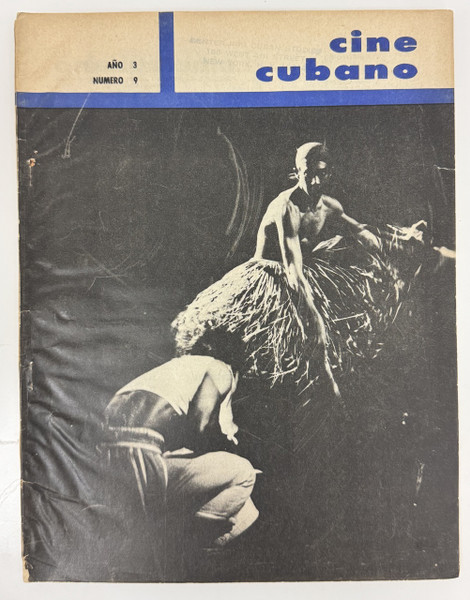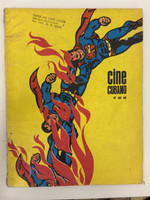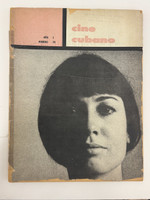- Travel
-
Exhibits
- La Portada Cubana
- Immortal Cuba: Artists Take on Their Heroes
- Seattle Poster Exhibit
- Sandra Dooley & Alejandrina Cué
- The Art of Wayacón
- Cuban Folk Art
- Cuba In Black And White
- 25 Years of Cuban Art Space
- Summer Folk Art Expo
- ¡SPRING AWAKENING FROM CUBA!
- Celebrating The Art Of Cuban Women
- Celebrating Paper, Affordable Art from Cuba
- Art of the Revolution
- Outsider Art
- Lost and Found
- En la lucha: Celebrating Cuban Women and Their Art
- Cuban Art Stash
- 100 Fires: 5 Cienfuegos Artists' Work on Paper
- Waya + Monte! Magic Realism in Cienfuegos
- Viva Cuba Viva! Poster Show
- Cultivando Sueños
- Black Lives Matter in Cuba Jan 9-March 27
- Leandro Soto: Crónicas visuales
- Cuban Canvas
-
Archive
- Global Reflection 2018: Spirit and Community
- Exhibit in the cloud: Contemporary Works on Paper
- MADE IN CUBA! MINNEAPOLIS EXHIBIT
- Cuban Posters and Photography from CCS collection
- AUTUMN SALE! Sept/Oct 2017
- SPRING ARTS AND CRAFT SALE
- Vuelo Directo/Non Stop: Alberto & Alejandro Lescay
- The Many Faces of Fidel
- Somos
- Made in Cuba!
- The US empire in Cuban graphics
- Made in Cuba/Seattle exhibit
- Entre Nos
- Looking Back
- Cuban Art Space
- Membership/Donate
- About Us
- Cuba News
-
The cover of "Cine Cubano" Year 3, Number 9 features a dramatic black and white film still showing a figure in traditional dress performing what appears to be a folk dance, rendered in high contrast photography that emphasizes movement and cultural authenticity. Holbein's clean layout design frames the image with minimal geometric elements in blue, allowing the photographic content to dominate while maintaining the magazine's commitment to modernist typography and layout principles. This aesthetic approach reflects the revolutionary government's emphasis on documenting and celebrating popular culture while maintaining sophisticated visual presentation standards.
This historically significant issue centers on the "Informe y Saludo ante el Primer Congreso Nacional de Cultura" (Report and Greeting for the First National Congress of Culture), marking a crucial moment in revolutionary Cuba's cultural policy development. The First National Congress of Culture, held in early 1962, established foundational principles for Cuban cultural production under socialism and defined the relationship between artists, intellectuals, and revolutionary society. The magazine's coverage demonstrates ICAIC's central role in implementing new cultural policies while maintaining artistic quality and international engagement.
Published by the Instituto Cubano del Arte e Industria Cinematográficos under Alfredo Guevara's direction, this issue includes comprehensive coverage of Polish Cinema Week, discussions with renowned director Andrzeju Wajda, analysis of "Los bandidos de Orgosolo," coverage of Leipzig's Documentary and Short Film Festival, and interviews with Jorge Raydu about Cuban cinema's development. Contributors including Héctor García Mesa, Diana Irigaray, Eduardo Manet, Abraham Salzman, Enrique Pineda Barnet, and Michelangelo Antonioni provide diverse perspectives on cinema's role in cultural transformation. The editorial offices at Calle 23 no. 1155, apartado 55, Habana, and subscription information (1.20 pesos annually in Cuba, 2.75 for subscriptions, 5.00 international) maintained the magazine's accessibility during this foundational period of Cuban cultural policy when cinema became a crucial tool for revolutionary education and international dialogue.
-
-
Discover More at the Center for Cuban Studies





![Instituto Cubano del Arte e Industria Cinematográficos / ICAIC (director: Alfredo Guevara), "Cine Cubano" issue 48 - "Cine del Tercer Mundo," [1970s]. Offset print, magazine.](https://cdn10.bigcommerce.com/s-ufzvo/products/5901/images/6486/IMG_8812__28936.1761537538.200.200.jpg?c=2)
![Instituto Cubano del Arte e Industria Cinematográficos / ICAIC (layout: Holbein, cover design: Reboiro (Antonio Fernández Reboiro), director: Alfredo Guevara), "Cine Cubano" issues 78/79/80, [1978-1980]. Offset print, magazine.](https://cdn10.bigcommerce.com/s-ufzvo/products/5904/images/6491/IMG_8819__36889.1761600195.200.200.jpg?c=2)
![Instituto Cubano del Arte e Industria Cinematográficos / ICAIC (layout: Holbein, cover design: Tony Fernández Reboiro, director: Alfredo Guevara), "Cine Cubano" issues 54-55, [1969]. Offset print, magazine.](https://cdn10.bigcommerce.com/s-ufzvo/products/5905/images/6493/IMG_8821__07256.1761600194.200.200.jpg?c=2)